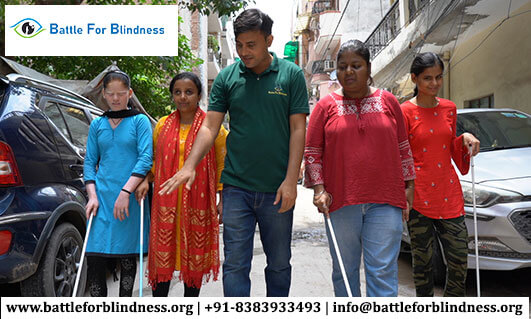In the digital age, web accessibility is of paramount importance to ensure that blind individuals can navigate, access information, and engage with online content effortlessly. Blind accessible web design and inclusive digital content practices empower individuals with visual impairments to participate fully in the digital world. In this blog, we will delve into the significance of blind accessible web design and provide guidelines for creating inclusive digital content that caters to the needs of blind users.
Screen Reader Compatibility:
Screen readers are vital tools for blind individuals, as they convert on-screen text into synthesized speech or braille output. To make websites screen reader compatible, it is essential to use proper document structure with headings, subheadings, lists, and semantic tags. Ensure that screen readers can accurately navigate through the content, providing a seamless and meaningful reading experience.
Alternative Text for Images:
Adding concise and descriptive alternative text (alt text) to images is crucial for blind users. Alt text allows screen readers to convey the content and purpose of images. Use accurate descriptions that provide context and convey the essential information the image intends to communicate. Decorative images should have empty alt text (alt=””) to inform screen readers that they do not convey meaningful content.
Clear and Consistent Navigation:
Creating clear and consistent navigation is essential for blind users to efficiently browse websites. Utilize descriptive and concise link text that accurately describes the destination or purpose of the link. Consistency in the placement and structure of navigation elements allows blind users to quickly locate and access different sections of the website.
Accessible Forms and Input Fields:
Ensure that forms and input fields are properly labeled to provide clear instructions and indicate the required information. Use HTML form elements with associated labels to make them accessible to screen readers. Error messages should be clearly identified and communicated to help blind users understand and correct any input errors.
Keyboard Accessibility:
Designing websites with keyboard accessibility in mind is crucial for blind users who rely on keyboard navigation. Ensure that all interactive elements, including menus, buttons, links, and form fields, can be easily accessed and activated using only the keyboard. Proper focus management ensures that the user knows which element currently has focus and can navigate through the website seamlessly.
Text Readability and Contrast:
Consider the readability of text for individuals with visual impairments. Use clear, legible fonts and appropriate font sizes that are easily readable when magnified. Ensure sufficient color contrast between text and background elements to enhance readability. Avoid relying solely on color to convey information and use additional visual cues, such as icons or underlines, to supplement information.
User Testing and Feedback:
Engage blind individuals in user testing and solicit their feedback to ensure the effectiveness of your website’s accessibility. Their firsthand insights and experiences can help identify potential barriers and areas for improvement. Regularly seek feedback from blind users to continually enhance the accessibility of your website and address any challenges they may face.
Conclusion:

Blind accessible web design and inclusive digital content are pivotal in providing equal access to blind individuals, allowing them to navigate and engage with online content seamlessly. By implementing practices such as screen reader compatibility, alternative text for images, clear navigation, accessible forms, keyboard accessibility, text readability, and user testing, we can create an inclusive digital environment that caters to the needs of blind users. Embracing these principles enables blind individuals to access information, connect with others, and participate fully in the online world, fostering inclusivity and equality for all.





